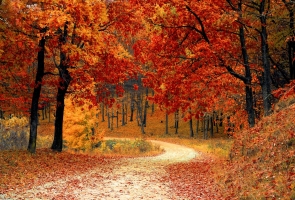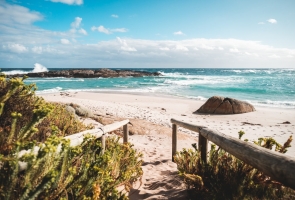If you run a travel agency or have been tasked with creating content for one, this post is for you. I will encourage you to read what follows thoroughly because I’m going to make some observations about some of the projects we’ve seen over the years at Beez, and what I have to share will probably surprise you.
Travel blogging is a particularly touchy area of content marketing, and I say that for several reasons. For starters, it is difficult to pin down a demographic. It is one of the easiest areas of travel content marketing through which to communicate with a very specific audience, but it can be difficult to define the right audience, even for decidedly adult traveler-based subject areas.
It can also be difficult to paint a compelling picture of a destination in words. One might think that it all comes down to vivid, descriptive language, but that alone can be a huge part of the problem. I’ll get more into that in a minute.
Lastly, it is difficult – and sometimes impossible – to find a writer with firsthand experience of a destination. Nearly all copywriters tasked with writing travel articles draw from other blogs and travel websites to get together enough information to fill a 500- or 1,000-word article.
Right now, I would like for us to take a look at each of these problem areas in detail. As we go, I’ll be giving you some advice on how to avoid some of the biggest snags I’ve seen in creating content for travel blogs.
#1: Don’t Alienate Your Readers
When writing about specific destinations, it is important to keep in mind that you are reaching out to potential travelers who view the task of planning a trip very differently from one another.
For some, the first concern is budget. For others, the primary concern is luxury and the ability to score some hardcore R&R. For still others, the biggest questions are about local activities, eateries, and night spots. There are loads of destinations to which all of the above would apply, so how do you write effectively to such a broad audience?
The key to not alienating any potential reader is to isolate information that is important to all the above-mentioned groups and try not to stuff with extraneous details. In just a few sentences, you can hit most of the above points and make anyone feel comfortable contacting you to learn more. Here’s an example:
“Whether you prefer luxury seaside accommodations or the rusticity of the most primitive campsite in a quiet maritime setting, you will find what you are looking for in Downeast Maine. Enjoy the hustle and bustle of Bar Harbor or the tranquility of one of Acadia’s many park loop roads. The two are mere minutes apart by car, bike, or foot. At night, enjoy a traditional Downeast lobster bake, a more upscale meal at any of the island’s finer eateries, or sit around the campfire roasting some of New England’s famous red-skinned franks with the family.”
The above paints a picture of Downeast Maine as a great destination for a wide variety of travelers. There are upscale accommodations, but you can also pitch a tent. You can get a lobster dinner or roast some hot dogs. In short, anyone who reads that paragraph will find points of relatability and see the appeal of the destination as it relates to his or her tastes and budget. That is the kind of balance you want – and need – to achieve in your travel blogs.
#2: Watch Your Language
No, I don’t mean those kinds of words, but the kinds I am referring to could be just as damaging for different reasons. I’m talking specifically about using hackneyed adjectives or superlatives to describe destinations and destination activities.
You can only use words like “breathtaking” and “picturesque” so many times before they start becoming annoying. Yes, descriptive words are necessary to paint a mental picture of a destination, but the descriptors need to be specific to the destination.
As soon as someone reads the word “picturesque,” they know you’ve never been there. In what way is the area picturesque? Give specific, truly immersive details. Don’t pad your descriptions with general, meaningless adjectives that prove your lack of concrete knowledge.
Please also keep in mind that no one will believe that anyplace you recommend will have the “best” fried clams in New England. Don’t make baseless claims. They don’t have to be the best. They just need to be “a local favorite.” See the difference? Which of those claims would you find more believable?
#3: Don’t Farm Your Blog Out to the Lowest Bidder
This one might be a little more difficult, but for key destinations that you book often, it is well worth seeking out a writer who has been there and knows firsthand what each one really offers. Any reputable copywriting company has writers from a variety of backgrounds and can usually source (or outsource) writers with firsthand experience to write killer copy about a specific place.
If it just isn’t possible to find a reliable firsthand account, insist on in-depth research and don’t be afraid to ask for cited sources. A travel writer is tasked with writing immersive copy. That means it will typically require a bit more research than average.
As a final note, I would offer one last bit of advice: Don’t expect authoritative travel copy if you are only willing to spend $5 on an article. Good quality costs a bit more. The tradeoff, though, is that you are likely to get more bookings from a $50 blog article written by an experienced writer than one written on a shoestring budget by a writer you cannot properly vet beforehand.
If you need help getting better engagement on your travel blog or are just beginning to develop one, we are here to help. Our seasoned travel copywriting professionals are eager to help you develop meaningful and engaging content that will help you increase your blog’s visibility, increase SEO, and attract more new business to your agency.




